
Architectures
Reflecting the harmony between man and nature, the different social patterns and family structures, and the cultural types, cultural differences, aesthetical minds, religious beliefs and the ethnical groups’ absorption of alien cultures, the ethnical architectures of Yunnan are characterized by diversity, richness, origin and exclusiveness.
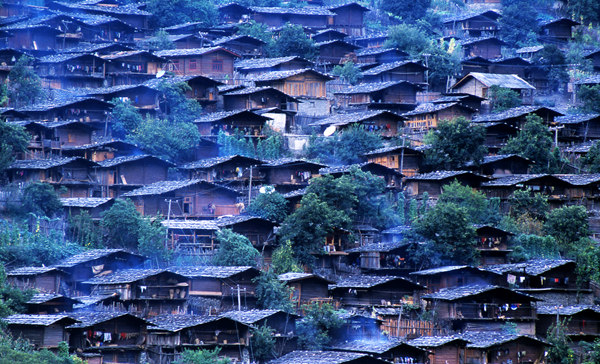
The stilted houses of the Lisu people, Weixi
As a symbol of the wisdom and creativity of the various ethnical groups of Yunnan Province, the ethnical architectures are historical and cultural heritages of great significance.
During the long course of development, the ethnical groups have created special ethnical cultures. The folk dwelling houses and architectures are an important component reflecting the aesthetical standards, social thoughts and local features of the ethnical groups.
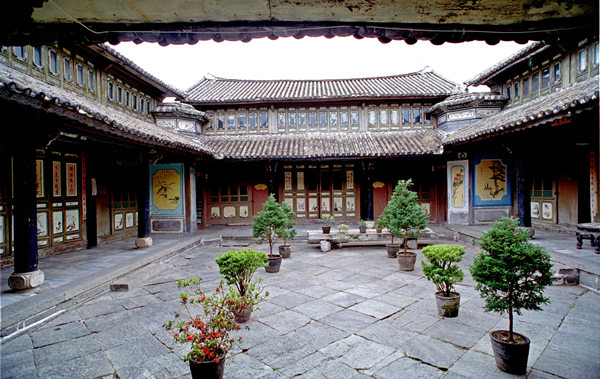
The traditional architecture of the Bai people, Dali
The dwelling houses of Naxi and Bai in Northwest Yunnan have kept the charms of the traditional Chinese architecture. Adopting earth-wood or brick (stone)-wood structure and with white walls and grey tiles, the houses are just the same beautiful and elegant as the local mountain and rivers. Mosuo people living by Lugu Lake live in wooden houses. The walls are built by piling round logs and wood planks are used as tiles. Dai, Jingpo, Wa, De’ang, Jinuo and Lahu peoples live in wooden houses built with bamboos, trees and grasses. Simple but elegant, the houses give us a feeling of beauty.
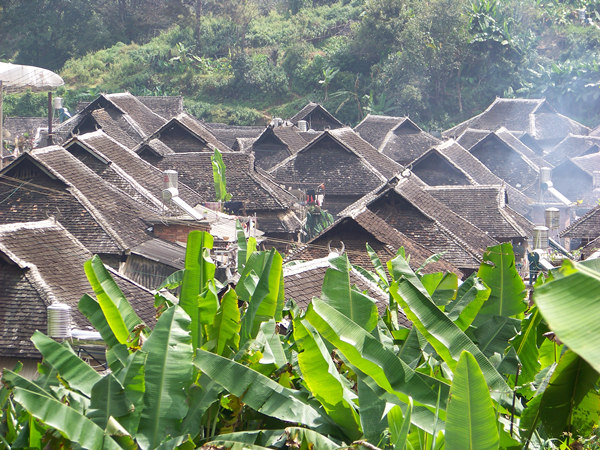
The traditional houses of the Dai people, Xishuangbanna
The diverse dwelling houses are results of the ethnical groups’ wisdom to adapt to the natural environment and exhibit their culture and customs. They are developed from the two ways of dwelling: living on trees and living in caves. Living on trees, man can avoid attacks of the fierce beasts. This way of dwelling gradually develops into the bamboo houses of Dai, and Bulang in South Yunnan. The bamboo houses are usually built in two floors. Man lives on the second floor and the domestic animals live on the first floor. The houses are ventilating, suitable for the tropical and subtropical climate conditions. The shapes of the bamboo houses are varied as well. While Dai’s are beautiful and possessing natural grace, Wa’s are natural and simple, Jinuo’s and Lahu’s are similar to the dwelling structure of Han, Hani’s are called Mushroom Houses because they are in the shape of mushrooms. Sun-dried mud bricks and cogon grasses are used to build the walls and roofs of the walls of mushroom houses respectively.
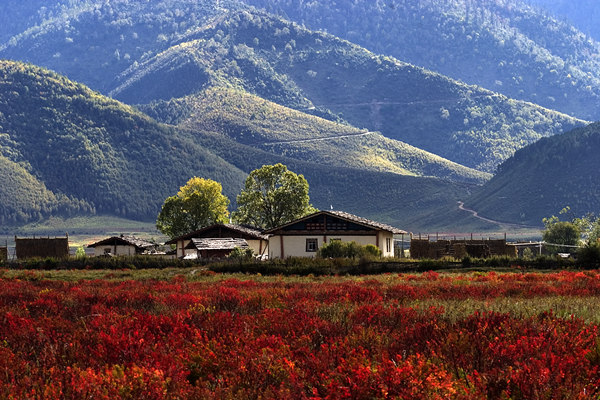
The Tibetan houses, Shangri-La
In addition, the watch houses of Tibetan and stone houses of Buyi also bear distinctive features. The stone houses and earth houses of Bai, Yi, Naxi and Tibetan in the west of Yunnan are developed from the dwelling caves. Besides providing shelters, the houses are very firm as well.
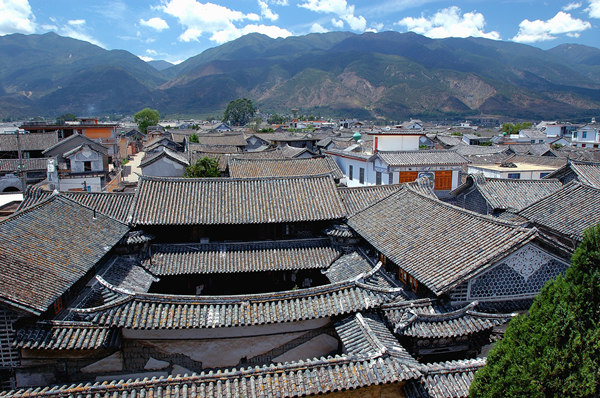
A birds-eye view of the traditional architecture of the Bai people, Dali
Besides the natural environment, religions impose influences to different degrees on the architecture patterns of the ethnical areas. For example, in Bai areas, the building pattern of “three houses and one screen wall” is adopted, that is, one residential courtyard usually consists of three houses and one screen wall facing the gate of the principal house. The principal house is the residence of the head of the family. The houses on both sides are residences for the children. Meanwhile, the principal house is higher than the houses on its sides, representing the respect for seniority. The screen walls can reflect light and keep out the wind and there are paintings on the screen walls. The paintings are always religion story pictures. People hope the religion paintings to exorcise evil spirits out of the houses.
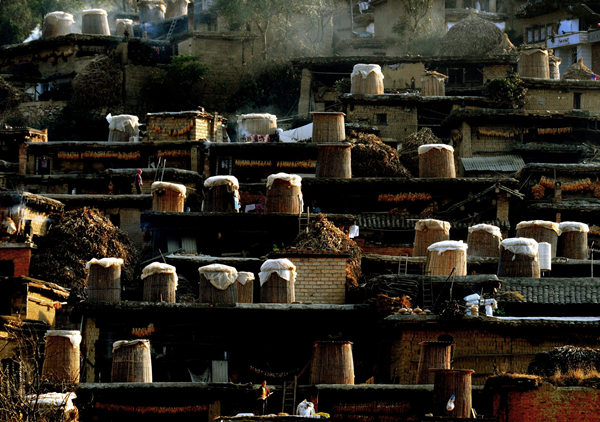
The earthen house of the Yi people, Luxi
More than 20 ethnical groups living in Yunnan since ancient time have their own primeval religions that produce great effects on their architectures. The ethnical dwellings are in fact artifacts of religions. Furthermore, the ethnical minorities’ admiration of ancestry and nature are also expressed in totem poles, arts of adornment, and the god trees and altars. The sculpture of dragon, snake, tiger and lions are widely used in ethnical architectures. For example, the tiger head on the ridge of Bai’s houses, the relief sculpture of eagle wings and claws in Yi’s dwellings, and the wooden bird adornments in Wa’s dwellings are not only a manifestation of decoration art but also gods admired by the ethnical minorities, representing their beliefs.
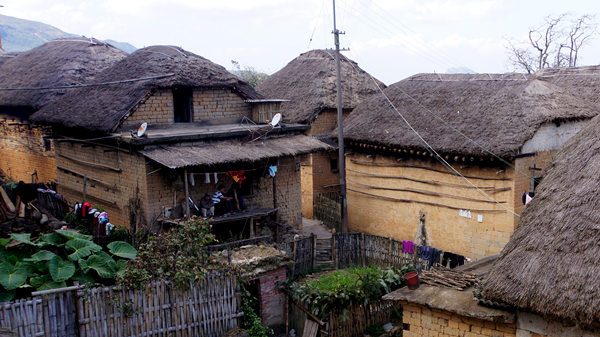
The mushroom-like houses of the Hani people, Yuanyang
The ethnical architectures of Yunnan bear much significance other than dwellings. They are created by the times, reflecting the productivity, scientific level, social system, ideologies, culture and arts of



